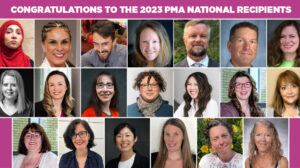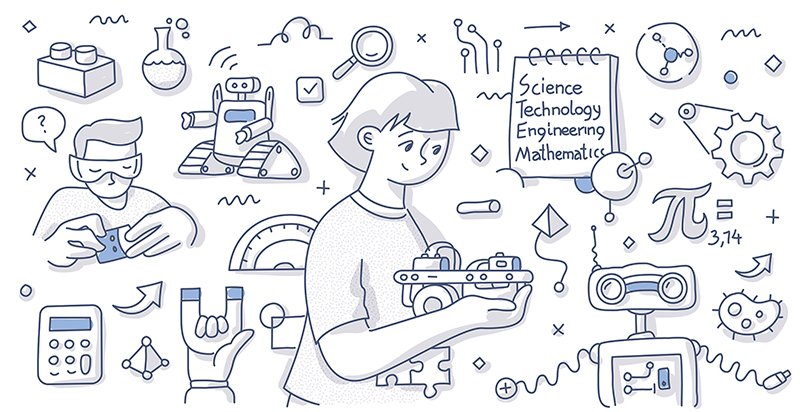Ten years ago, few people could define the acronym STEM (science, technology, engineering and math). Now, it’s commonplace with STEM academies, STEM magnet schools, STEM clubs and many types of STEM toys. A recent poll by Let’s Talk Science also found that 95% of adults in Canada recognize the value of youth STEM education..
Yet, despite this growing public attention on STEM learning, participation in senior high school sciences has remained flat and much of the increase in post-secondary STEM enrolment is accounted for by international students. Additionally, there continue to be gender-based differences in STEM participation, despite growing attention on equity and diversity.
These are among the findings in the latest Spotlight on Science Learning report from Let’s Talk Science, supported by Amgen Canada, called Snapshot of a Decade: 2012-2022. The report examines STEM education and engagement in Canada over the last ten years: what has changed, what hasn’t changed, and what needs to change to further STEM learning.
“The passing of a decade offers an opportunity to reflect and see where we stand on youth STEM engagement and talent development in Canada,” said Dr. Bonnie Schmidt, President and Founder of Let’s Talk Science, a national charitable organization that offers free innovative programming for Early Years – Grade 12 youth and educators, families and post-secondary volunteers. “The world today is very different from 2012 when we completed the first Spotlight on Science Learning report and made recommendations to support talent development. Since then, we have been monitoring key metrics and indicators.”
Significant Changes
Changing most since 2012 may be the rising public awareness about the importance of STEM for addressing critical global challenges and how it’s transforming the world of work. The need to foster interest in STEM and support the development of STEM skills, starting young, has resulted in expanded outreach programming, increased government support for STEM engagement, and new post-secondary STEM programs.
While that’s good news, the report notes that critical shortages are expected in many STEM fields, including skilled trades, in the next decade. Attention to scaling successful programming may be needed.
While Canada remains in the top tier on global science and math tests, such as the OECD’s PISA (Programme for International Student Assessment), national results are trending down. Enrolment in high school senior-level math and science courses remains flat. Grade 12 math has the highest national completion rate at 47%. Trailing subjects are chemistry at 25%, biology at 22%, physics at 15% and computer science at 3%. While participation in pure science courses remains low, the report suggests that youth are interested in interdisciplinary approaches that help them build skills to solve problems.
Benefits to Canada
We cannot be complacent in light of the transformation that is now underway, underpinned by science, technology and innovation. The report points out that we must prepare youth for a complex reality that involves tackling the existential threat of climate change and developing a sustainable economy, while transforming how we work in an increasingly digital environment. The education system plays a critical role in addressing these challenges by ensuring students develop deep and broad capabilities in STEM. This will be especially important as major talent shortages are expected in many STEM-related fields, such as skilled trades, health services, the emerging green industry, technology and more. Beyond preparing youth for future careers, STEM engagement also lays a strong foundation that fosters the development of informed citizens who are creative thinkers and prepared to participate. And a scientifically literate and STEM-skilled population benefits everyone.
What needs to change?
The Spotlight on Science Learning report identifies several areas that could have a transformative impact on learning, such as: adopting multidisciplinary approaches to teaching STEM with a focus on real-world issues such as climate science and digital literacy; embracing the importance of Indigenous Ways of Knowing; removing systemic barriers for many students; increasing career education at an early age; and broadening post-secondary admission requirements.
The report reinforces that meaningful STEM engagement can help youth keep their options open, seize opportunities, contribute in meaningful ways, drive innovation and thrive in a fast-changing world. STEM education helps get youth ready for future work and responsible citizenship – both are vital.
For more information and to access the full report, please visit letstalkscience.ca.
Content courtesy of Let’s Talk Science.












